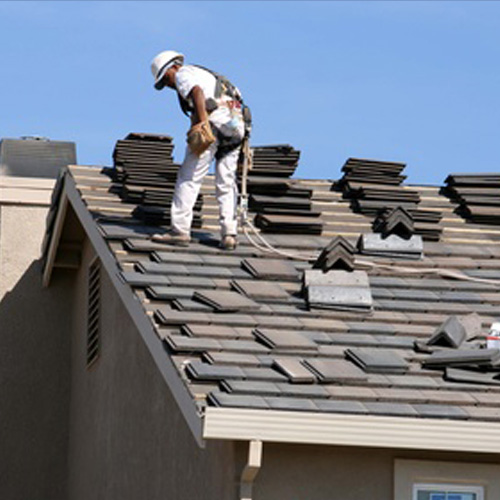How to Prepare Your Home for a Reroof
A reroofing project is one of the most important investments a homeowner can make in preserving the integrity and value of their property. Whether you’re replacing a few worn shingles or undergoing a full roof replacement, proper preparation can help the process go more smoothly, minimize disruptions, and protect both your home and belongings during the renovation. Preparing your home ahead of time not only supports the roofing crew in doing their job efficiently but also ensures your peace of mind throughout the project. This page helps you communicate effectively with your roofing contractor before work starts.

Understand the Scope of the Project
Before any work begins, take the time to understand what your roofing project entails. Are you having the entire roof replaced or just certain areas repaired? Will the old roof be removed completely or will the new materials be laid over the existing ones? Knowing the answers to these questions helps you anticipate the timeline, the level of disruption, and the kind of prep work required. You should also clarify whether the roofers will need access to your attic or other parts of the house during the project.
A clear understanding of the project scope allows you to communicate effectively with the contractor and make informed decisions. Make sure all agreements are documented in a contract that outlines costs, timelines, materials, and any specific homeowner responsibilities during the project.
Clear the Surrounding Area
The space around your home will become a busy work zone, so it’s crucial to remove any items that could get damaged or be in the way. Patio furniture, grills, potted plants, lawn ornaments, and any other outdoor valuables should be moved away from the perimeter of the home. Roofing debris can fall off the roof, so keeping the area clear helps prevent damage and ensures safety.
Landscaping features like shrubs or garden beds close to the house may also benefit from protective coverings. Laying down tarps or plywood can shield delicate plants and help with cleanup afterward. If you have a pool nearby, consider covering it to prevent dust, nails, and debris from contaminating the water.
Protect the Inside of Your Home
While the work is taking place on the exterior, vibrations and movement from the reroofing process can affect the inside of your home as well. Items hung on walls, particularly on upper floors or in the attic, may shake loose and fall. Take down mirrors, framed pictures, and any wall-mounted decorations to prevent damage.
If your attic is used for storage, consider covering your belongings with a tarp or plastic sheet. Roofing debris or dust can easily filter through and create a mess. While contractors typically clean up after themselves, some particles may still find their way into your attic space. If noise is a concern—especially for young children, pets, or those working from home—it’s wise to plan accordingly. You may choose to spend time away from the house or adjust your schedule during the noisiest parts of the project.
Make Accommodations for Children and Pets
Reroofing is a loud, intense process that can be distressing for pets and young children. The constant hammering, movement on the roof, and presence of strangers around the house can cause stress and anxiety. It may be a good idea to arrange for children or pets to stay with friends or family during the most disruptive parts of the job.
If relocation isn’t possible, confining pets to a quiet, secure room far from the work area and keeping children indoors and supervised can help. Be mindful of the fact that contractors may be coming and going frequently, so it’s important to keep pets safely contained to avoid any escapes or accidents.
Provide Access and Communicate Clearly
Roofers will need clear access to your driveway, walkways, and potentially the backyard to set up ladders, unload materials, and dispose of old roofing. If you typically park in your driveway or close to the house, consider parking your car elsewhere to give the crew enough room to operate. Providing access to power outlets and exterior water sources may also be necessary, depending on the tools and equipment used.
Good communication with your roofing contractor is essential. Be available to answer any last-minute questions and keep your contact information easily accessible. A well-prepared homeowner who works collaboratively with the roofing crew can help the project stay on schedule and avoid unnecessary delays.
Inspect After Completion
Once the reroofing project is finished, take time to inspect the work. Your contractor should provide a walkthrough to point out the completed areas, ensure all debris has been removed, and address any final questions you may have. Check your attic and interior ceilings for any signs of leaks or damage. If your gutters were affected during the job, make sure they’ve been cleaned and reattached properly.
You should also receive documentation such as warranty information and a final invoice. Keeping these records will be helpful in case of future issues or if you decide to sell your home.
